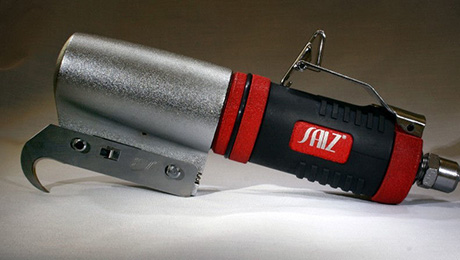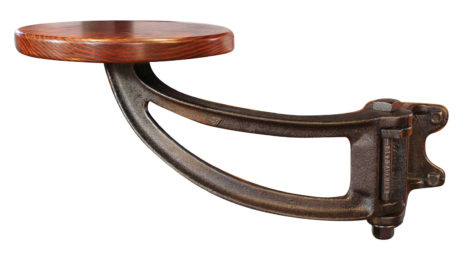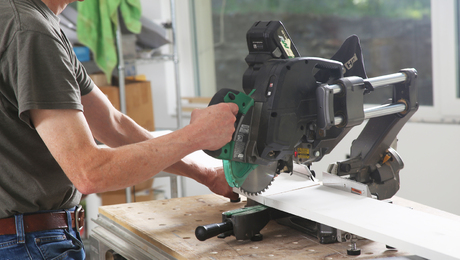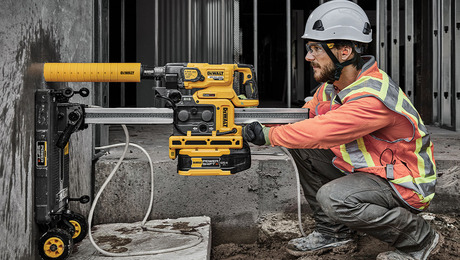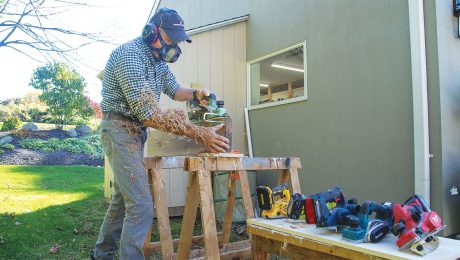Festool HKC 55 + FSK420 Retracting Guide: The Guide Rail
Festool's new FSK crosscut guides turn the new HK 55 and HKC 55 saws into precision compound-miter saws.
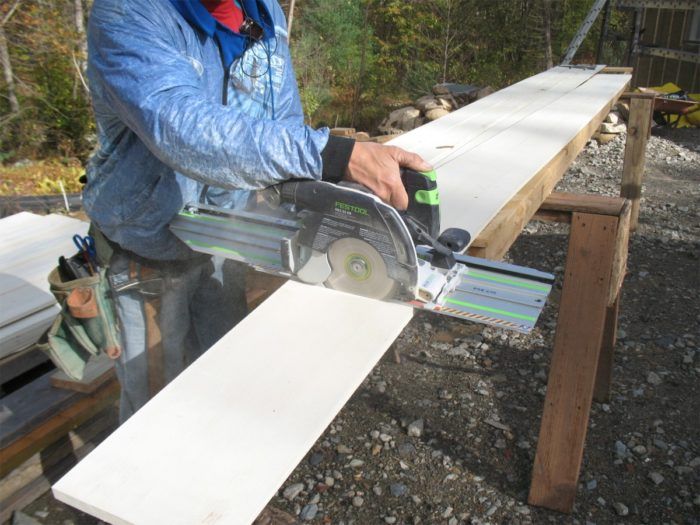
I’ve been putting Festool’s new 18v 5.2-Ah cordless circular saw and its companion guide rail to work doing framing and exterior finish for the past month at the ProHOME project. I’m always impressed with Festool’s products, but for my work, this saw setup is outstanding on both the design/engineering side and the performance side.
The new Festool saw looks and operates like a regular sidewinder circular saw — much different from the Festool track saws most carpenters are familiar with. And that’s a good thing for carpenters whose work ranges from framing to remodeling to finish; they’ll get the most out of this saw system.
One thing that really turns the HKC 55 saw into a high-performance tool are the FSK retracting guide rails. At first glance, the setup looks like a sidewinder with a gangly baseplate.
Unlike the regular Festool guides, where the saw just rests on the track, the FSK guides interlock with the channels at the bottom of the HKC 55, and a rear stop prevents the saw from sliding off a guide until you want to disengage them. On the left side of the guide is a box section that houses a linear spring. The spring retracts the guide when you lift it off a workpiece so the saw is in the rear position ready to make another cut. Like other Festool guides, there is a clear-plastic alignment strip on the right side of the track. These features of the FSK guide turn the saw into a precise cross-cutting machine.
Festool has three FSK guide models of different length: the 250, 420, and 670, with crosscut capacities of approximately 10 in., 16 in, and 27 in., respectively.
There are two operating modes when using the system: You can align the guide with a mark on the work, as you might do with a regular Festool track, or you can use a degree setting on the track itself that can be set for repeat angles.
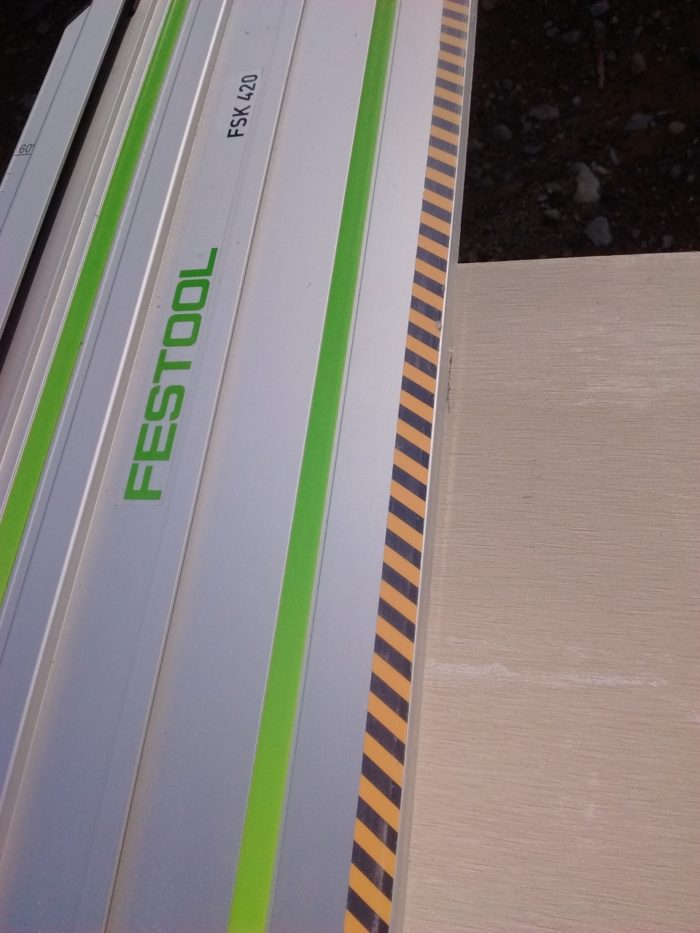
Aligning the guide with a line on a workpiece is straightforward. The friction tape on the base keeps the guide from shifting off the line. So once you place the guide down on a line, you just run the saw on the guide for a clean, straight cut.
Along the left side is a detent slide marked out in degrees.

A sliding index stop can be locked into the preset detents or tightened down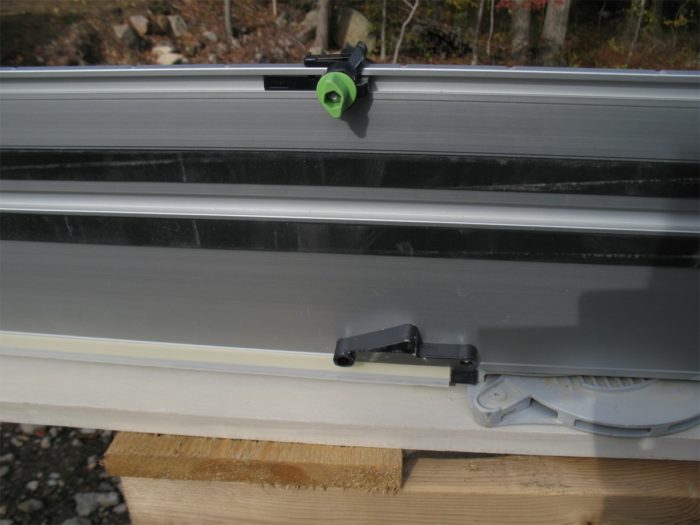 at any degree setting between detents by twisting the lock screw. The angle is determined by a central pivot point on the bottom of the guide and the index stop. I wasn’t sure that relying on two fairly close stop points would be accurate enough for precise crosscuts, but they are. You just have to make sure that the workpiece edge is straight and that there isn’t too much wane on dimensional lumber. Once you nuzzle the stops against the edge of the workpiece and press the guide to the surface, the saw will make dead-on cuts at the preset angle.
at any degree setting between detents by twisting the lock screw. The angle is determined by a central pivot point on the bottom of the guide and the index stop. I wasn’t sure that relying on two fairly close stop points would be accurate enough for precise crosscuts, but they are. You just have to make sure that the workpiece edge is straight and that there isn’t too much wane on dimensional lumber. Once you nuzzle the stops against the edge of the workpiece and press the guide to the surface, the saw will make dead-on cuts at the preset angle.
 I used the system to cut rafters, including valley jacks and hip rafters, with clean results. And I cut a ton of Boral TruExterior trim with square and miter cuts just as accurate as my sliding compound-miter saw. The Festool system makes work much more efficient; instead of moving heavy 16-ft. 1×12 trim onto a miter-saw stand, I can just carry the cordless saw to each end of the boards and cut right off the stack.
I used the system to cut rafters, including valley jacks and hip rafters, with clean results. And I cut a ton of Boral TruExterior trim with square and miter cuts just as accurate as my sliding compound-miter saw. The Festool system makes work much more efficient; instead of moving heavy 16-ft. 1×12 trim onto a miter-saw stand, I can just carry the cordless saw to each end of the boards and cut right off the stack.
The guides sell as part of a saw/track system or separately for between $150 and $200.
There are a couple of videos worth checking out to learn more about the system:
Festool UK has a basic feature video that shows off the saw and FSK guide.
For a longer video, check out this one by David Stanton. He covers all the functions and features in about 20 minutes.

